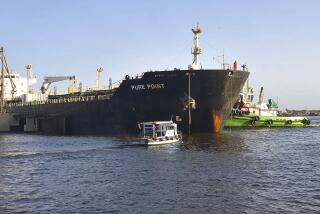High-Priced Oil May Be Balm for the S&L; Mess and for Nation’s Taxpayers
- Share via
While it may be a reach to say that Saddam Hussein did Washington a favor by storming into Kuwait, the ruthless Iraqi leader nonetheless may have sown the seeds to end Washington’s deepest mess--the savings-and-loan crisis.
As far-fetched as this may seem, the nub of the argument is this. While it appears that a good portion of the S&L; losses can be tied to fraud, the truth is that many of the losses stem from good-faith, but speculative, business ventures gone sour. Much of the real estate now under foreclosure was planned, funded and built during the heyday of energy in the early- to mid-1980s. These deals made sense then, when oil ran around $30 a barrel and the economies of energy-rich states were booming.
In 1986, oil prices collapsed, and so did those real-estate markets. All the offices, homes and shopping centers built with unbridled optimism and greed could find no tenants. Thrifts, stuck with delinquent loans and empty properties, began to fail left and right. For a while, there seemed to be no way out except for all of us taxpayers to pay half a trillion dollars to clean things up.
Then Saddam Hussein invaded Kuwait. He now controls about 20% of the oil output of the Organization of Petroleum Exporting Countries. Even if the immediate crisis ends, Hussein has made it abundandtly clear that he wants much higher oil prices soon.
If oil climbs to $25 or $30 a barrel, many of those real-estate investments that made sense before will work again, as Texas, Colorado, Louisiana and other energy-rich states recover and prosper. The Resolution Trust Corporation, charged by the government to dispose of foreclosed properties from failed S&Ls;, must take care not to sell them too cheaply. With volatile oil prices, what seems like a fair price in August may be a steal by Christmas.
More to Read
Inside the business of entertainment
The Wide Shot brings you news, analysis and insights on everything from streaming wars to production — and what it all means for the future.
You may occasionally receive promotional content from the Los Angeles Times.










